PREVIOUS
Symbols of Tamil Nadu
December 19 , 2023
752 days
131651
0
(இதன் தமிழ் வடிவத்திற்கு இங்கே சொடுக்கவும்)
Symbols of Tamil Nadu

- Tamil Nadu is located in the old Madras Presidency, where the first British settlements were initially present.
- In 1901, the composite Madras state was reorganized, and the present Tamil Nadu was formed with various amenities.
- Every state has its unique set of official state symbols.
- It is including birds, animals, songs, trees, sports, etc.
- All those symbols are chosen keenly to depict the state’s image.
- The symbols of the state represent unity among humans, the strength of working together, and knowledge about the committees in the state.
- The state of Tamil Nadu was formed in 1956.
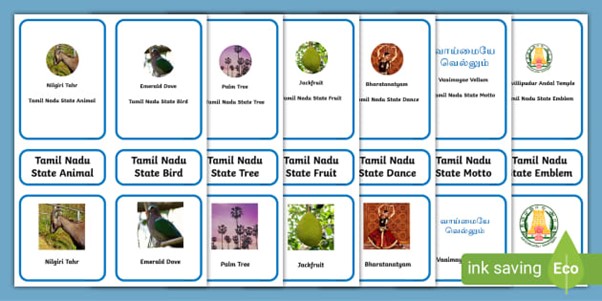
State Emblem
- The symbol of Tamil Nadu was adopted in 1949 during the period of Omandur Ramasamy Reddy’s Chief Ministership.
- The state emblem was designed in 1949 by artist R. Krishna Rao who was a native of Madurai.
- Krishna Rao was honored with awards and titles for his contribution to the state.
- He was a student of the Government College of Fine Arts and Crafts in Chennai.
- He went on to become the principal of the college later.
- Rao was approached to design the emblem in 1948 when he was a professor of applied arts in the college.
- It consists of the Lion Capital of Ashoka without the bell lotus foundation and flanked on either side by an Indian flag.
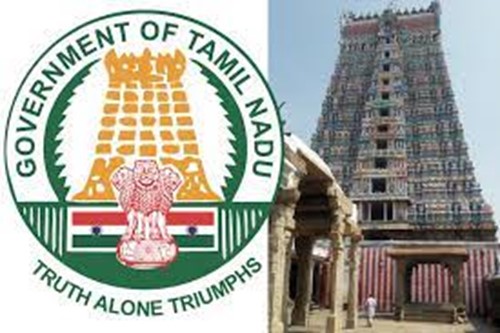
- Behind the capital, is the image of a Gopuram or Hindu temple tower based on the Srivilliputhur Temple.
- Around the rim of the seal runs an inscription in Tamil script, one at the top தமிழ் நாடு அரசு ("Tamil Nadu Arasu" which translates to "Government of Tamil Nadu") and the other at the bottom வாய்மையே வெல்லும் ("Vaymaiye Vellum".
- It translates to "Truth Alone Triumphs" also commonly known as "Satyameva Jayate" in Sanskrit).
- It is the only state emblem that has the Indian Flag and Hindu temple tower on its seal.
State Motto - Truth Alone Triumphs
- Vaaymaiyae Vellum is a quote taken from the Mundaka Upanishad, the concluding part of the sacred Hindu Vedas.
- It is the Sanskrit to Tamil language translation of Satyameva Jayate, the National Motto of the Republic of India.
- The State government changed it in 1969 in Tamil, during the period of Anna Durai as Chief Minister.
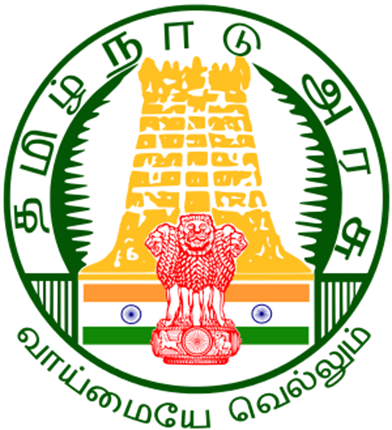
State Anthem
- Tamiḻttāy Vāḻttu is the state anthem of Tamil Nadu.
- It was written by Manonmaniam Sundaranar and composed by M. S. Viswanathan.
- The Government of Tamil Nadu issued an order to sing or play the anthem in the official functions of the government.
- And those functions organised by educational institutions and public establishments have started with this song and ended with the Indian National Anthem.
- The song is sung daily in schools all over Tamil Nadu during the assembly in the morning.
- It was adopted by Tamil Nadu as the state anthem on 23 November 1970.
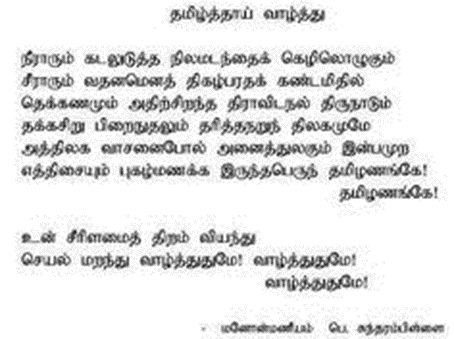
State Day - Tamil Nadu Day
- Tamil Nadu Day is celebrated in the state of Tamil Nadu to commemorate the formation of the state on 1 November 1956.
- On 18 July 1967, Madras State was officially renamed to Tamil Nadu.
- In 2019, the Government of Tamil Nadu led by the then chief minister of Tamil Nadu Edappadi K Palaniswami, announced that 1 November of every year will be celebrated as Tamil Nadu Day from 2019 to mark the formation of the state.
- In July 2022, Government of Tamil Nadu led by the then chief minister of Tamil Nadu M. K. Stalin, announced that 18 July of every year will be celebrated as Tamil Nadu Day from 2022 to mark the formation of the state.
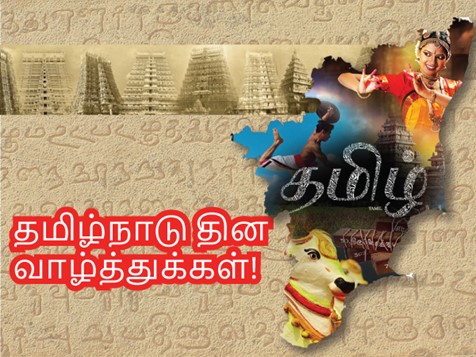
State Language - Tamil
- Tamil is the official language of the Indian state of Tamil Nadu.
- Tamil is one of the longest-surviving classical languages in the world.
- In 1578, Portuguese Christian missionaries published a Tamil prayer book in old Tamil script named Thambiran Vanakkam, thus making Tamil the first Indian language to be printed and published.
- Tamil became the first legally recognised Classical language of India in 2004.
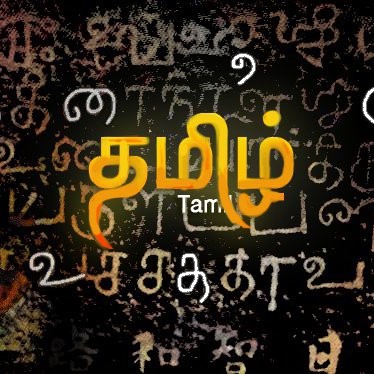
State Animal - Nilgiri Tahr
- Its scientific name is Nilgiritragus hylocrius.
- Nilgiri Varaiyaadu is an ungulate that is endemic to the Nilgiri Hills and the southern portion of the Western and Eastern Ghats in the states of Tamil Nadu.
- It is the only species in the genus Nilgiritragus and is closely related to the sheep of the genus Ovis.
- The Nilgiri Tahr is a stocky goat with short, coarse fur and a bristly mane.
- Males are larger than females and of darker colour when mature.
- Both sexes have curved horns, reaching up to 40 cm (16 in) for males and 30 cm (12 in) for females.
- Adult males weigh 80 to 100 kg (180 to 220 lb) and stand about 100 cm (39 in) tall at the shoulder.
- Adult males develop a light grey area on their backs, thus are called "saddlebacks".
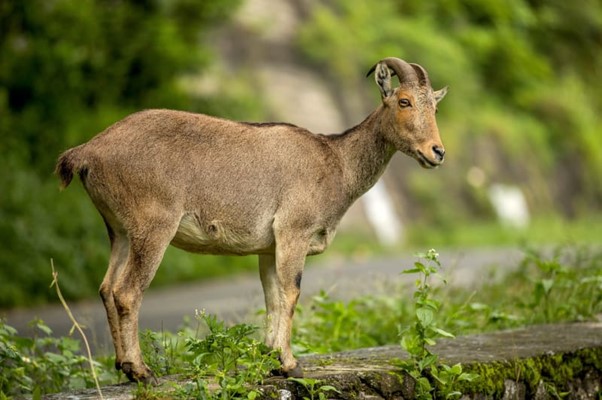
State Bird - Common Emerald Dove
- Its scientific name is Chalcophaps indica.
- Maragadhappuraa is a widespread resident breeding pigeon native to the tropical and subtropical parts of the Indian Subcontinent and Southeast Asia.
- The dove is also known by the names of green dove and green-winged pigeon.
- In 1743, the English naturalist George Edwards included a picture and a description of the common emerald dove in his A Natural History of Uncommon Birds.
- He used the English name "Green Wing'd Dove".
- The common emerald dove is a stocky, medium-sized pigeon, typically 23–27 cm (9.1–10.6 in) in length.
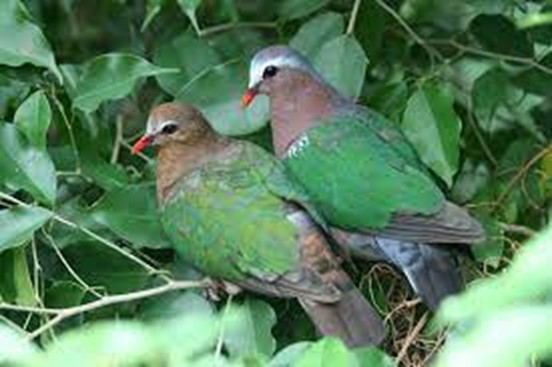
State Insect - Tamil Yeoman
- Its scientific name is Cirrochroa thais.
- Tamil Maravan is a species of nymphalidae butterfly found in tropical forest areas of India.
- It is found in forested areas of tropical Sri Lanka and India.
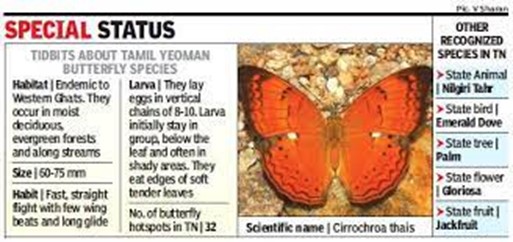
State Flower - Flame Lily
- Its scientific name is Gloriosa superba.
- Chengaandhal is a species of flowering plant in the family of colchicaceae flowers.
- This herbaceous perennial grows from a fleshy rhizome.
- It is scandent, climbing using modified leaf-tip tendrils, the stem reaching 4 m (13 ft) long.
- The leaves are mainly alternately arranged, but they may be opposite, as well.
- They are somewhat lance-shaped and tipped with tendrils.
- They are up 13 to 20 cm (5.1 to 7.9 in) long.
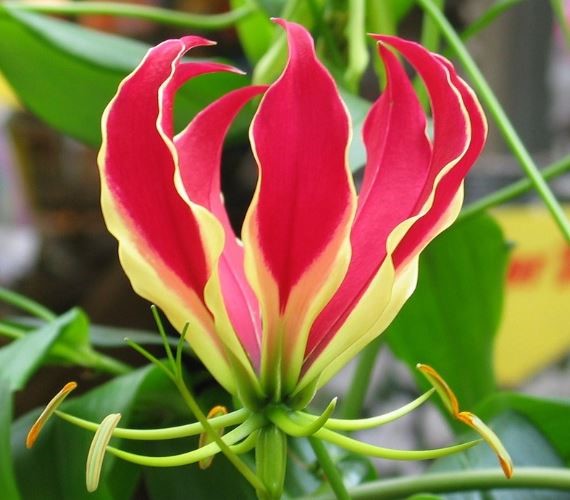
State Fruit - Jackfruit
- Its scientific name is Artocarpus heterophyllus.
- Palaapalam species of tree in the fig, mulberry, and breadfruit family (Moraceae) tree.
- The jackfruit is the largest tree fruit, reaching as much as 55 kg (120 pounds) in weight, 90 cm (35 inches) in length, and 50 cm (20 inches) in diameter.
- A mature jackfruit tree produces some 200 fruits per year, with older trees bearing up to 500 fruits in a year.
- The jackfruit is a multiple fruit composed of hundreds to thousands of individual flowers, and the fleshy petals of the unripe fruit are eaten.
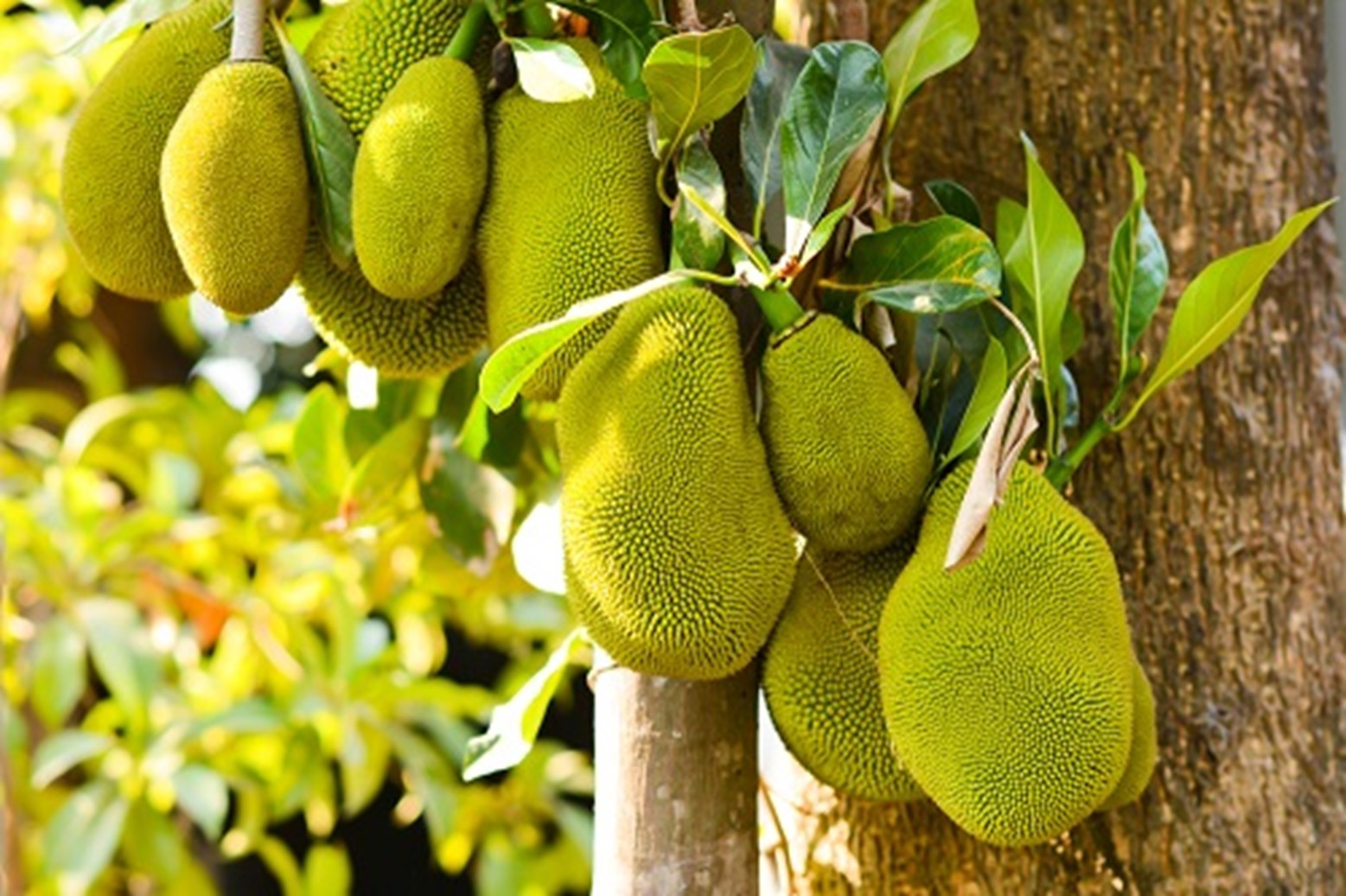
State Tree - Palm Tree
- Its scientific name is Borassus flabellifer.
- Borassus (palmyra palm) is a genus of five species of fan palms, native to tropical regions of Africa, Asia, and Papua New Guinea.
- The leaves are fan-shaped, 2–3 m (6 ft 7 in – 9 ft 10 in) long, with spines along the petiole margins (no spines in B. heineanus).
- The fruits are 150–250 mm (5.9–9.8 in) wide and roughly spherical, and each contains one to three large seeds.
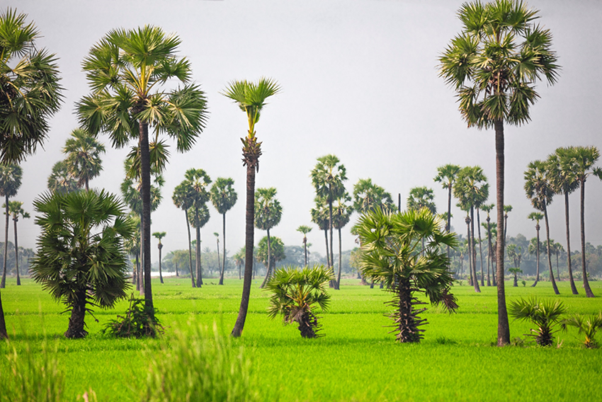
State Sport - Kabaddi
- Kabaddi is a contact team sport.
- It is played between two teams of seven players.
- The objective of the game is for a single player on offense, referred to as a "raider".
- He will run into the opposing team's half of the court, touch out as many of their players and return to their own half of the court, all without being tackled by the defenders in 30 seconds.
- Points are scored for each player tagged by the raider, while the opposing team earns a point for stopping the raider.
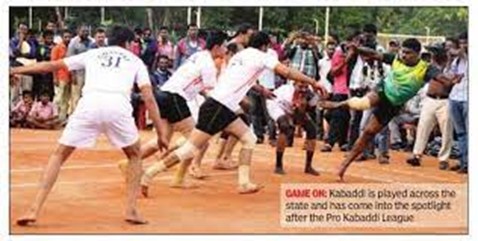
State Dance Form - Bharathanatyam
- Paratanāṭṭiyam is an Indian classical dance form that originated in Tamil Nadu.
- It is one of eight Indian classical dance forms recognized by the Sangeet Natak Akademi.
- It is the oldest classical dance tradition in India.
- It expresses South Indian religious themes and spiritual ideas, particularly of Shaivism and in general of Hinduism.
- Bharatanatyam contains different types of banis.
- Bani, or "tradition", is a term used to describe the dance technique and style specific to a guru or school, often named for the village of the guru.
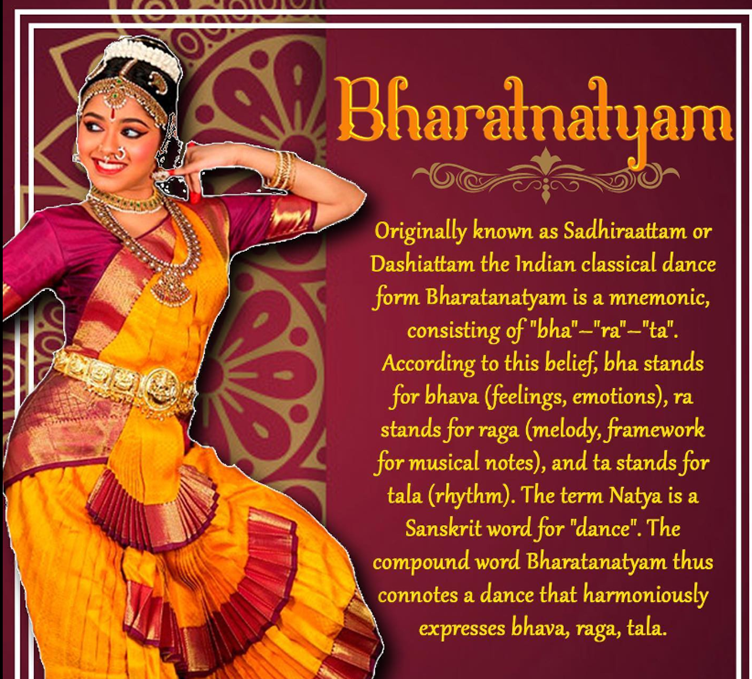
- Bharatanatyam style is noted for its fixed upper torso, bent legs and knees flexed (Aramandi) combined with footwork, and a vocabulary of sign language based on gestures of hands, eyes, and face muscles.
- Sadiraattam was renamed Bharatanatyam in 1932.
- E Krishna Iyer and Rukmini Devi Arundale put forward a proposal to rename Sadiraattam, also known as Parathaiyar Aattam or Thevarattam, as Bharatanatyam.
- They also were instrumental in modifying mainly the Pandanallur style of dance.
- Sadiraattam remained exclusive to Hindu temples through the 19th century.
- It was banned by the colonial British government in 1910.
- The theoretical foundations of Bharatanatyam are found first in Kootha Nool in Tamil and then referred also in Natya Shastra, a Sanskrit text of performance arts.
- Natya Shastra is attributed to the ancient scholar Bharata Muni.
- The Thanjavur Quartet developed the basic structure of modern Bharatanatyam by formalizing it.
- Thanjavur Quartet were four brothers, Chinnayya, Ponnayya, Sivanandam and Vadivelu, who lived during the early 19th century.
- The brothers were employed in the courts of the Maratha King Saraboji II at Thanjavur initially.
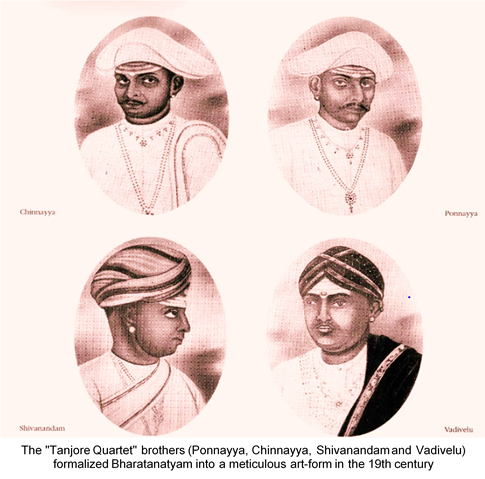
Leave a Reply
Your Comment is awaiting moderation.


